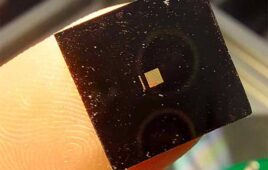GE and DARPA are collaborating on a $2.9 million study of neuromodulation as a treatment for Type 2 diabetes.
GE scientists have developed a novel, potentially breakthrough approach that could restore nerve signals to a healthy state using non-invasive devices that stimulate metabolic biosystems and produce drug-like effects, but with greater precision than traditional treatments, and with fewer side effects.
The GE bioelectronic medicine team aims to demonstrate that its new, non-invasive, stimulation technique can be used to reverse or treat diabetes in pre-clinical models, instead of the typical drugs associated with treatments today. The team hopes that the results of the three-year study indicate the ability to prevent the onset of metabolic dysfunction associated with the onset of diabetes, and that the GE team can progress toward safely testing and applying this technology in the clinic.
“Today’s drug treatments and monitoring methods for diabetes can be uncomfortable and time-consuming, and create side-effects for patients,” said GE biologist Victoria Cotero in a statement from GE. “Our project with DARPA aims to find a better alternative that treats diabetes with non-invasive medical devices without the side effects associated with drug treatments,” added Cotero, who is working on the DARPA project.
DARPA launched its Electrical Prescriptions program several years ago to deliver non-pharmacological treatments for pain, general inflammation, post-traumatic stress, severe anxiety, and trauma that employ precise, closed-loop, non-invasive modulation of the patient’s peripheral nervous system. This diabetes project is part of a growing body of research in the field of bioelectronic medicine that is exploring new ways to treat chronic diseases such as diabetes by using electronic devices to correct dysfunctions in the peripheral nervous system that are believed to be key contributing factors to these diseases.
Potential new approaches include in vivo, real-time biosensors and novel neural interfaces using optical, acoustic, electromagnetic, or engineered biology strategies to achieve precise targeting with potentially single-axon resolution. If successful, such precise neuromodulation capability technology would reduce dependence on traditional drugs and help doctors evaluate and predict different physiological states, characterizing host response in patients with severe infections, and providing a quantitative framework to guide operations and therapy, according to DARPA.
GE’s bioelectronic medicine team is located at the company’s global research center in Niskayuna, N.Y.





